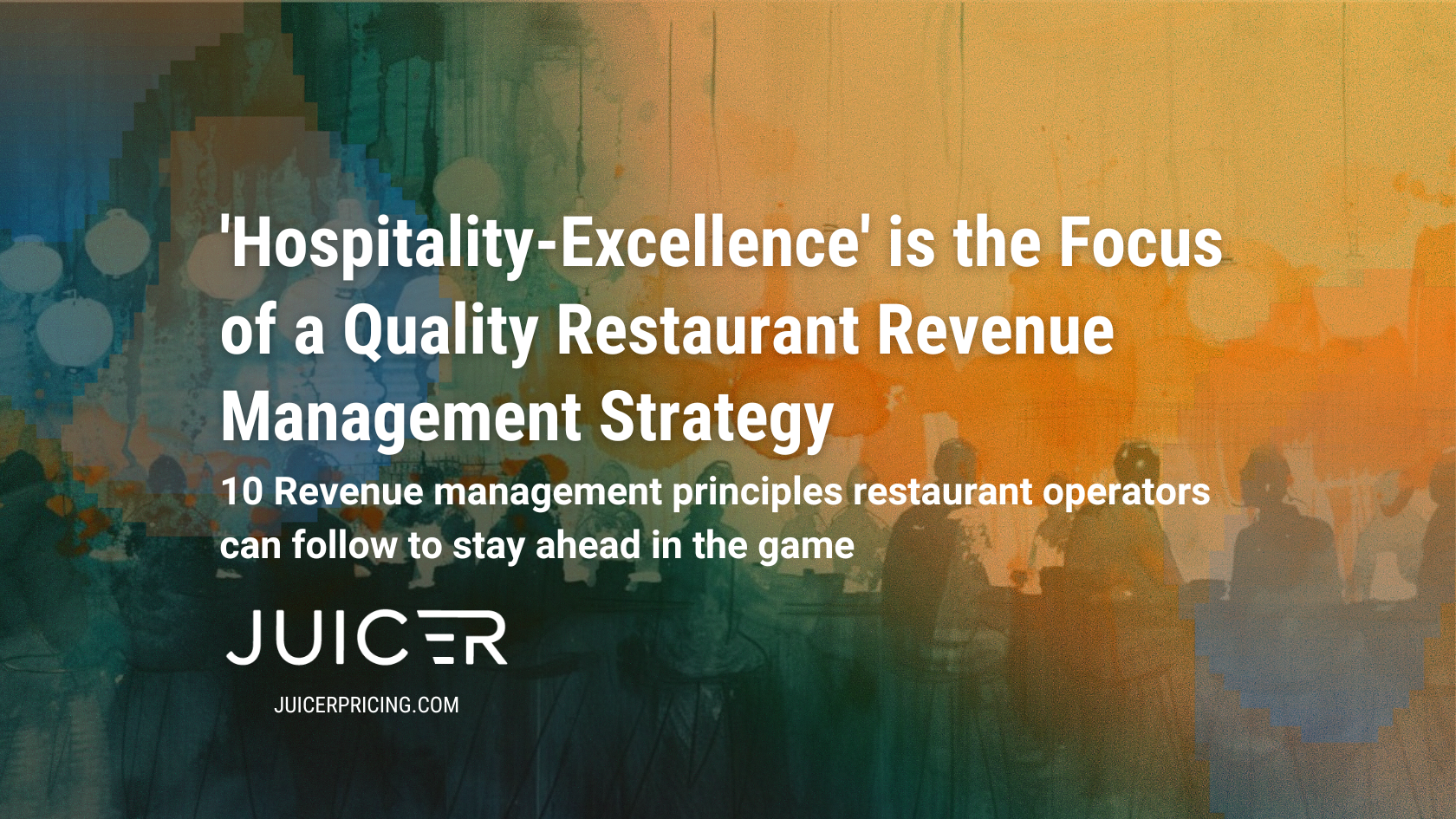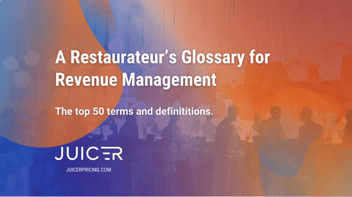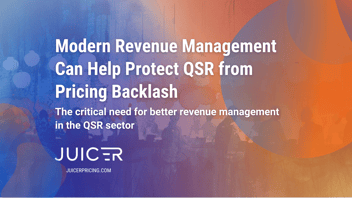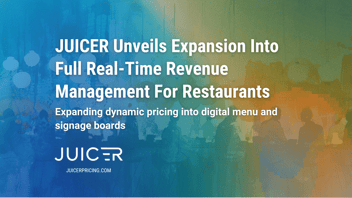Effective revenue management goes beyond the numbers—it starts with a commitment to hospitality excellence. In fact, ensuring customer satisfaction and providing exceptional dining experiences remain at the heart of all successful operations.
Here’s our 10 Revenue Management Principles restaurant operators can follow to stay ahead in the game:
1. Hospitality-First Approach
Prioritize customer satisfaction in every pricing decision, ensuring that value and experience are enhanced, not compromised.
A fine dining establishment reviews its pricing strategy to include surprise complimentary dishes for repeat customers, reinforcing a luxury dining experience without directly impacting menu prices. They monitor feedback closely to ensure guests feel valued and not overcharged.
2. Data-Driven Pricing
Utilize historical and real-time sales data to set optimal prices that reflect demand while considering customer price sensitivity.
Example: A café identifies through data analysis that its specialty coffees are popular but not peak sellers. By slightly adjusting prices based on time-of-day demand, they find a balance that boosts sales without deterring their regulars.
3. Demand-Based Pricing Strategy
Implement dynamic pricing based on careful analysis of demand trends, ensuring adjustments are transparent and understood by customers.
An ice cream shop introduces seasonal pricing for exclusive flavors, clearly communicating the rarity and special sourcing of ingredients to justify price variations, which enhances the customer's appreciation of the product.
4. Dynamic Pricing for 3rd Party Delivery
Adjust delivery menu prices thoughtfully, taking into account the convenience factor for customers and the costs involved.
Understanding the higher demand for comfort food delivered during bad weather, a local diner applies moderate price increases on these items specifically for delivery, while offering promotions on in-store dining as a balanced approach.
5. Competitive Pricing Intelligence
Stay informed about competitors’ pricing strategies but prioritize offering unparalleled value that reinforces your brand’s unique selling propositions.
A sushi restaurant keeps its prices aligned with local competitors but differentiates itself by offering an unmatched dining experience, including chef interactions and live preparation displays, justifying a premium.
6. Automated Competitor Monitoring
Use technology to stay updated on market trends and competitor pricing, but let the unique qualities of your service and offerings guide your pricing strategy.
A family-owned pizzeria uses automated tools to monitor competitors but focuses on promoting its use of family recipes and locally sourced ingredients to create a strong value proposition that goes beyond price.
7. Promotional Intelligence
Design promotions and offers that not only attract customers but also enhance their dining experience, making each offer feel special.
A bistro introduces a "Mystery Dish" night, where guests enjoy a discounted surprise dish from the chef, adding an element of excitement and engagement to the dining experience.
8. Customizable Automation Levels
Choose a pricing automation level that allows you to maintain control over the customer experience, ensuring technology serves your hospitality goals.
A cocktail bar opts for semi-automated dynamic pricing on popular drinks during happy hours, carefully selecting which drinks to include in the promotion to ensure quality is maintained.
9. Comprehensive Integration
Seamlessly integrate pricing strategies across various sales channels to provide a consistent, high-quality customer experience.
A fast-casual chain ensures that prices are consistent across online ordering platforms and in-store menus, avoiding customer confusion and maintaining trust.
10. Performance Tracking and Optimization
Regularly assess the impact of pricing strategies on customer satisfaction and adjust based on feedback, ensuring decisions are always hospitality-driven.
After adjusting menu prices, a gourmet burger restaurant actively solicits customer feedback through surveys. Insights gathered lead to minor tweaks, ensuring that customers feel they receive value for money.
JUICER always places hospitality at the forefront of revenue management strategies. This ensures that restaurants not only achieve their financial goals but also build lasting relationships with their customers. By prioritizing the dining experience in every decision, restaurants can navigate the complexities of pricing and promotions while upholding the essence of exceptional hospitality.
Reach out to us to learn how we can help you put hospitality excellence at the center of your revenue management strategy.




